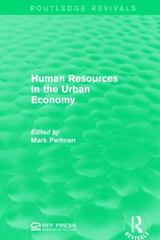Labor Supply. In the static (i.e., one-period) consumption-labor framework of Chapter 2, suppose that the utility function of any given consumer is u(c,n) = 1-0 in which c denotes consumption and n denotes labor. The terms o (the Greek lowercase letter "sigma"), w (the Greek lowercase letter "psi"), and O (the Greek lowercase letter "theta") are all exogenous parameter values and thus are taken as given by the consumer. The range of numerical values of these three exogenous parameters are o > 0, y > 0, and 0> 0. In the following analysis, the parameters y and O are always held fixed at their (though unspecified) respective positive numerical values. There are two different types of consumers. All consumers have identical budget constraints C = w.n and identical Lagrange functions 1+- -1 n +2. w.n- c] . 1-0 The only difference between the two categories of consumers is that the Type I consumer has a utility parameter o that is in the range 0 1.Based on the Lagrange function above, provide the rst-order condition for 6. Clearly display the rst-order condition by drawing a box around it. . Based on the Lagrange function above, provide the rst-order condition for n. Clearly display the rst-order condition by drawing a box around it. . Using the rst-order conditions computed in parts a and b, provide the important steps of algebra that lead to the consumption-labor optimality condition, which should be written as _u,,(c,n) = \"C(Cm) The term in ellipsis (\"...\") on the right-hand side is for you to determine. (Note: the nal expression may not include the Lagrange multiplier.) . If there are any (2 terms that appear in the consumption-labor optimality condition in part c, substitute them out using the budget constraint c = w-n. (Note: The final solution should not contain any (2 terms.) Suppose that the real wage has increased from wL to wH. In the single figure below, provide a qualitative sketch that shows the changes in the consumption-labor optimality conditions for the two different types (Type I and Type II) of consumers for both the real wage w, and wH. (Note: ALO numerical analysis should be included in your solution; points may be deducted if the sketch relies on numeric examples.) Briey (but carefully) justify the economic interpretation for the diagrammatic results in part e. (Note: \"economic interpretation\" is not simply a verbal restatement of the mathematics. ZERO points may be awarded if the economic interpretation/explanation is unclear.) consumption leisure








